| 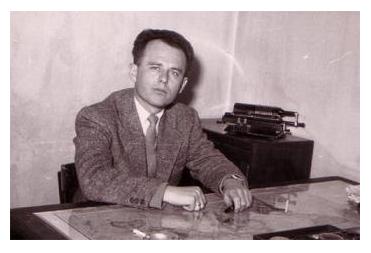 Throughout
these past months we have been entertaining
a period of rigorous revival of the
political conscience of the People
from the suspension of several years
which was cultivated and actualized
since 1960 and onwards at least, in
different forms and different methodologies.
The political spirit of a People stems
from the sense of power and the capacity
for meting justice without gagging
ideas and individuals. The sense of
terrorism in any level and especially
on the level of social decry as repercussion
for the active thought and estimation
of thing that may not be fully within
the boundaries of the acceptable mainstream
propaganda is the basic and highest
tool of smothering the political spirit
of the Citizens. Throughout
these past months we have been entertaining
a period of rigorous revival of the
political conscience of the People
from the suspension of several years
which was cultivated and actualized
since 1960 and onwards at least, in
different forms and different methodologies.
The political spirit of a People stems
from the sense of power and the capacity
for meting justice without gagging
ideas and individuals. The sense of
terrorism in any level and especially
on the level of social decry as repercussion
for the active thought and estimation
of thing that may not be fully within
the boundaries of the acceptable mainstream
propaganda is the basic and highest
tool of smothering the political spirit
of the Citizens.
With the occasion of the anniversary
of November 17th 1973 and up until
December 25th we will embark on an
analysis of a series of political
crimes primarily against individuals
such as Georgios A. Geritsidis and
secondarily against the People by
the same regimes claiming they brought
on change from the totalitarianism
of the fascist administration the
People opposed.
THE CASE OF THE ASSASSINATION
AND STATE COVER-UP OF GEORGIOS A.
GERITSIDIS
A. BASIC ELEMENTS OF COMMUNICATION
POLICY
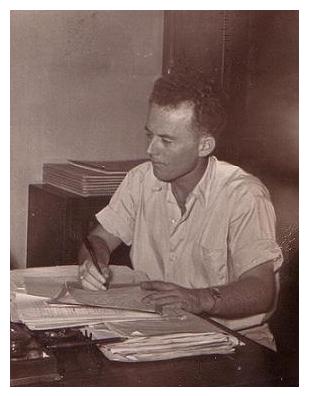 Always
in a research, in order to discover
anything that happened for which we
were not present or for which there
is conflicting evidence and indications/
claims, we must begin from the official
version / report of the happenings
and gradually check on the basis of
logic and objectivity the reality
of these claims. Always
in a research, in order to discover
anything that happened for which we
were not present or for which there
is conflicting evidence and indications/
claims, we must begin from the official
version / report of the happenings
and gradually check on the basis of
logic and objectivity the reality
of these claims.
The best way to cover up a crime
is to present it as an accident /
natural occurrence of events or collateral
damage of another event. That holds
for all the covered up assassinations
from the simple ones (i.e. designed
by private individuals against another
private individual) to the more complex
ones (i.e. designed by a group of
individuals/ state executives/ assorted
organizations against one or some
individuals). The assassinations that
are not to some degree covered up
are relatively few.
The communication policy thereby
used when there is a loss caused malice
prepense is to conceal this malice
prepense and if possible the causation
of this loss as having occurred by
anyone else except circumstance of
all types.
B. BASIC METHODOLOGY FOR EXAMINATION
OF EVERY CRIME OR ACT OF WHICH THE
PERPETRATOR IS IN QUESTION
A basic principle for all the range
of human behavior is that in order
for someone to act on something, that
someone must have the motivation to
do it. This motive must be strong
enough to overcome a) the inertia
which can and usually does exist in
a person and b) any sanctions/ repercussions/
problems/ schedule disruption / other
issues and obligations that may be
disrupted if this man is to act on
that something, good or bad. Also,
it is important to note that there
are objective motives and subjective
motives: objective
are the motives with which 90% of
the population would respond with
actions. Subjective
are the motives regarding which we
ca't quantify with accuracy the reaction
with actions by the population. The
subjective motives are usually highly
personal reasons which are a result
of psychological processes and/ or
pathology and cannot be generalized
beyond the case of the particular
person possessing such motives.
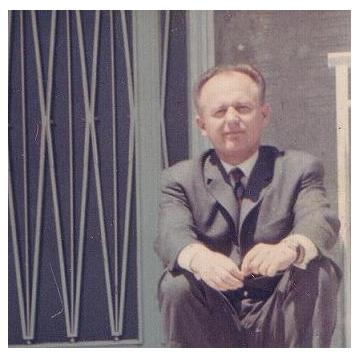 In
the case of the criminal activity,
the issue of motive is formed as follows:
The perpetrator of a criminal act
(and when we say criminal act we mean
of the simple criminal code and/or
the so-called White Collar Crime)
must have a motive strong enough to
defy the threat of persecution by
the Law in case he/she is revealed,
defy the Moral Code demanding of the
perpetrator not to act that way and
defy all the factors threatening the
opinion he/she has of their own self
as 'good' (from parental teachings
to religious dogma). In
the case of the criminal activity,
the issue of motive is formed as follows:
The perpetrator of a criminal act
(and when we say criminal act we mean
of the simple criminal code and/or
the so-called White Collar Crime)
must have a motive strong enough to
defy the threat of persecution by
the Law in case he/she is revealed,
defy the Moral Code demanding of the
perpetrator not to act that way and
defy all the factors threatening the
opinion he/she has of their own self
as 'good' (from parental teachings
to religious dogma).
In order to achieve such a powerful
motive as we described, that which
the perpetrator will gain must be
not only equivalent but by far surpassing
that which he/she needs to defy. For
that reason, usually the motives that
are strong enough to push someone
to crime are mainly the avoidance
of problems / sanctions and
secondarily motives of acquisition
of power which must be even higher
than the previous. Also, there has
to be a strong enough level of conviction/
affirmation that for the particular
crime there will be impunity either
from the State/ Law or some other
Moral Code (e.g. the promise of reward
in the afterlife).
Based on these principles, it is
a natural conclusion that the more
a person is at the extremes of society
(i.e. either in the lowest social
levels or in the highest) the more
this person has a propensity to acquire
motives promoting crime.
The capacity to cover up, always
based on logic, are far higher in
the highest levels of society rather
than in the lower ones. That is because
covering up a crime demands the capacity
to acquire certain means which preclude
a specific buying power or the capacity
to acquire accomplices which precludes
the ability to create motives in third
parties so that they will become accomplices
in a crime. That is why the chances
of solving a crime grow greatly the
more the socioeconomic status of the
perpetrator lowers.
Reaching the highest socioeconomic
levels of the so-called ruling classes,
the capacities to solve crimes taking
place at those levels are as small
as the capacity to collect data from/by
these leading classes from social
scientists over the ages. Also, in
those classes a great inhibitor against
committing crimes is raised as the
persecution of individuals belonging
to these classes is rare, hard and
highly lenient. Many times even if
the crime is not actually covered
up there is no persecution or examination
(e.g. the classic case of the murder/
violent death of the first wife of
the ship owner Stavros Niarhos, named
Eugenia).
Only one positive result exists from
this situation for everyone who wants
to search and reveal or form correct
hypotheses, conclusions and views
on such crimes: the fact that due
to the guarantee of lack of persection/
examination, the cover ups taking
place are easy to analyze and shoot
down based on simple documents and
logic.
C. THE CASE OF THE ASSASSINATION
OF GEORGIOS A. GERITISIDIS AND ITS
COVER UP
1. OFFICIAL VERSION
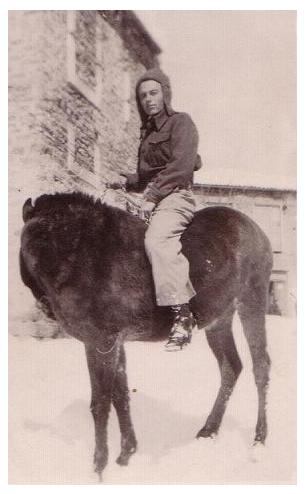 Officially
Georgios A. Geritsidis is a victim
of the violent skirmishes which took
place on November 17th 1973, murdered
by a bullet of a firearm (and specifically
a pompom) which was stray and struck
Georgios Geritsidis while he was in
his car in an area far removed from
the centre of the skirmishes and highly
unlikely/ irrational for his usual
professional schedule. This was unofficially
justified in retrospect by saying
that at the moment of his death Georgios
Geritsidis was evacuating people from
the dangerous zone and was giving
them a ride home. Officially
Georgios A. Geritsidis is a victim
of the violent skirmishes which took
place on November 17th 1973, murdered
by a bullet of a firearm (and specifically
a pompom) which was stray and struck
Georgios Geritsidis while he was in
his car in an area far removed from
the centre of the skirmishes and highly
unlikely/ irrational for his usual
professional schedule. This was unofficially
justified in retrospect by saying
that at the moment of his death Georgios
Geritsidis was evacuating people from
the dangerous zone and was giving
them a ride home.
The above version is the one regurgitated
ever since and which is not supported
by any other evidence than testimonies
of witnesses that were never presented
or were not eye-witnesses or reported
hearsay. Not once did a true witness,
by name or anonymously, come forth
presenting evidence that can be cross-checked
and verified.
Also, it is important to note that
there was a great guarding of the
body of George Geritsidis by armed
forces and police up until the very
moment of interment, to the point
that it was circulated that arrests
took place of people who took part
in his funeral, which had taken the
level of a peaceful and silent multitudinous
demonstration. During the eulegies,
there was a great pressure from state
representatives and priests so that
no speech would be delivered at all,
and if a speech could not be avoided,
it would be strictly personal.
The municipality donated, with the
reinstitution of democracy in 1974,
the (three-year use) grave in which
he had been buried for ever, so that
he would never have to be exhumed.
2. FACTS
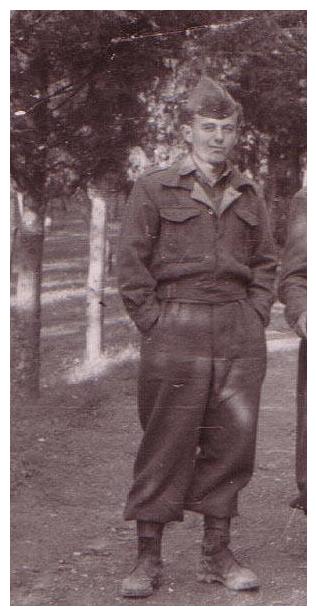
- The bones of the body prove that
there was never a bullet wound of
any caliber while there is a definite
indication that he sustained torture
and death is obvious to have been
caused by a blow with a blunt instrument
(probably a bludgeon) at the base
of the skull aimed at the victim's
slow death.
- The car in which it was officially
said that the wounding and the profuse
bleeding resulting from it took
place does not bear any blood indication
and never did.
- The hole from the bullet which
is shown to be the one deadly injuring
Georgios Geritsidis is not correspondent
to the caliber of the official version
and neither is it possible by projection
of its course to have been the one
to cause an entry wound (i.e. it
wouldn't have been able to cause
the wound they say it did from the
angle and position it pierced the
car).
- The witnesses testifying the
official version bring forth evidence,
official or unofficial, which contradicts
the official version (i.e., they
mention conditions / situations
that are in contrast with one another
or cannot be supported by physical
evidence).
- The filing in the Book of Incidents
and Crimes of the authorized police
precinct illegally and arbitrarily
precludes/ eliminates the conducting
of an investigation for criminal
activity even though it mentions
(with additional arbitrary medical
diagnosis/ terminology by the filing
nameless police officer) 'mortal
injury of person with gun within
city by unknown perpetrator'
- In the autopsy which was ordered
there is no filing of the findings
nor any other indication that the
autopsy was performed (which can
be proved that it took place by
examining the bones).
- The autopsy was ordered (and
is logged to have taken place) in
a date after the funeral and burial
of the body.
- The filing of the autopsy in
the morgue is empty and the filing
number matches an autopsy of a woman
which took place on a different
day and time. There is no logging
or signature of a coroner.
Just by listing the above true and
provable facts it is obvious that
here there has been a cover up of
the particular assassination. Also
it is obvious that the cover up has
not happened from the low socioeconomic
levels because it demands the creation
of accomplices in positions where
there are several inhibitions in the
creation of an accomplice motive.
Therefore we are led to the conclusion
that the cover up came from the high
socioeconomic levels and actually
those having a direct interaction
with the state administration and
power.
That which remains so that we will
be able to see the picture and possibly
delineate the perpetrators is the
motive. Why would the State or those
the State protects murder and cover
up the assassination of a middle class
public servant?
3. MOVATION ANALYSIS
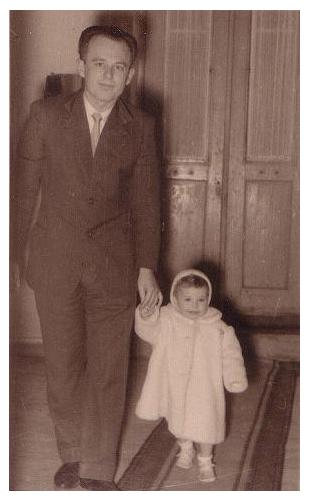 In
order to be able to analyze correctly
all the factors which react between
them in cause-effect relationships
so that we can reach the result we
are analyzing (in this case the partuclar
assassination and its cover up) we
need to ask and answer logically and
scientifically the following questions: In
order to be able to analyze correctly
all the factors which react between
them in cause-effect relationships
so that we can reach the result we
are analyzing (in this case the partuclar
assassination and its cover up) we
need to ask and answer logically and
scientifically the following questions:
- who has interest/ has benefited
from the incident?
- Who has the capacity to cause the
incident?
- What was happening in the direct
and secondarily indirect environment
of the victim?
- What would the victim affect had
he/she not been removed from the setting
and his/her activities?
In order to be able to answer these
questions we will have to look into
the environment and activities of
Georgios Geritsidis. Through the analysis
of these we will be able to find possible
candidates for the motive to execute
him.
George Geritsidis was working in
the IRS in the Public Sector. He had
the rank of Second Grade Department
Head, which means he had the capacity
and obligation to perform investigations
with the weight of signature higher
than that of a simple investigator.
In order to be able to be fully prepared
for an in depth and fair investigation
of the big corporations he was assigned,
before performing the investigation
George studied deeply the object of
each corproration/ business so that
he would be able to judge whether
the excuses or the expenses were true
to reality or not (e.g. before he
investigated a timber importing company,
he studied everything on timber commerce,
types and qualities of timber, needs/
expenses necessary or redundant regarding
the protection and maintenance of
the timber, and other things). Afterwards
he performed the investigation and
often made suggestions as an economist
for better, more effective organization
charts for these businesses so that
they would have a healthier business
and tax image from then on.
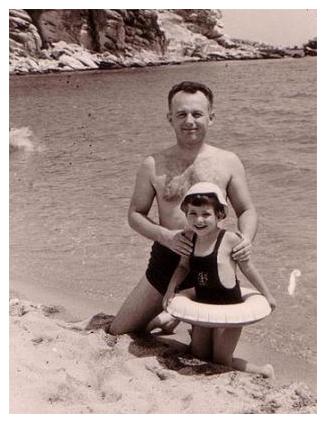 George
went through several types of tax
services bureaus where he handled
cases of small and large companies
as well as individual businesses in
the same manner, attitude and offer
of suggestions. He trained and informed
his colleagues and righly gained the
stature and reputation of an objective
and rigorous tax officer who supported
the interest of the Public Sector
without, however, undermining the
interest of the Citizens (his refusal
to be bribed led often to adverse
transfers or loss of his entitled
promotion). George
went through several types of tax
services bureaus where he handled
cases of small and large companies
as well as individual businesses in
the same manner, attitude and offer
of suggestions. He trained and informed
his colleagues and righly gained the
stature and reputation of an objective
and rigorous tax officer who supported
the interest of the Public Sector
without, however, undermining the
interest of the Citizens (his refusal
to be bribed led often to adverse
transfers or loss of his entitled
promotion).
Nearing the time of his murder, George
was working in the Chemical Businesses
IRS. In this IRS were submitted companies
that dealt with the production/ examination
of food and drink, medicines, cosmetics
and other products demanding chemical
and industrial processing. For each
of those, he studied to learn their
field from levels of danger to basic
chemical compounds used in the sector
as well as all types of control checks
demanded (and therefore require expenses)
for the 'all's wel' of these products.
On the day of his murder (Saturday
11/17/1973) George had gone out to
visit a pharmaceutical company regarding
the investigation he was running.
The itinerary which he was going to
follow was known to his family and
did not pass from areas where the
skirmishes were taking place even
though the IRS offices were in the
centre of Athens where on that day
there were snipers and all kinds of
dangerous elements.
His trail vanishes until his family
is alerted by phone to go to Rithmistiko
Hospital (currently General State
Hospital 'Georgios Gennimatas') to
his aid without being informed if
and how he ended up there nor what
his condition was. In the end the
search for him in a chaotic hospital
where the relatives of the innumerable
wounded of that day as well as the
wounded themselves filled without
order the areas and wards ended in
the mortuary where he was located
after an agonizing search with no
help or information by anyone in charge.
Explanations and manner/cause of
George's death were unclear and vague,
mutually contradicting among different
doctors/ coroners who attempted to
explain the facts from that night
onwards. Without explanation and no
support from the assorted official
versions for his time and place of
death, George's Service (the IRS)
declared him 'fallen in the line of
duty and because of it' and gave to
his widow and orphan the matching
pension.
Here it is important to note that
'fallen in the line of duty and because
of it' for a Public Servant means
that the person in question is summoned
to a service (in this case, tax investigation)
and because of his performing of this
service and because of that service
being performed that person dies.
Afterwards, in the beginning of the
reinstitution of democracy and the
sensational trial of the colonels,
the issue of George's assassination
was examined as a simple mention with
no other witness than his not yet
of age daughter, who was still under
shock and intense emotional distress
and to whom assorted stories had been
told from doctors, ranking officers,
'eye witnesses', colleagues, IRS Department
Head, relatives and policemen (who
were never once called or presented
themselves to testify under oath and
name anything). These versions and
claims were filed as the official
version although George's daughter
testified both to the examiner Tsevas
and in the official hearings that
all of these stories were unverified
and only hearsay.
After the conclusion of the trial
and the 'closing' of George's case,
George's house was monitored by police
officers although theoretically everything
had been settled and the regime itself
had falled.
Bearing in mind the following:
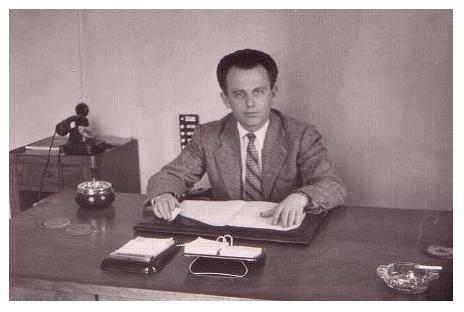
- upon first glance, there is nothing
in George's activity justifying
his death in context to the series
of events of the Polytechnic, not
even as collateral damage.
- everywhere in the official versions
he is referred to as acting alone,
even during his visit to the particular
pharmaceutical he was investigating,
although the service regulations
(and in order to ensure his work
wouldn't be cancelled by a technicality)
demands the presence of at least
one more tax officer who co-signs
the case. (the co-signed known by
name tax officer was never called
by the examiner and was generally
removed from every effort of George's
family to ask him for information
as the last man who saw him alive).
- the hearing/ investigation of
George's assassination case as a
criminal act by the state denounces
and shoots down the official filings
by the police.
- the 'loss' of several documents
and loggings certifying the manner
of death and its cause by the hospital,
the morgue and later George's service
(the Ministry of Economics) as well
as sections of the Police (e.g.
homicide) leaves unsubstantiated
and therefore, without examining
it, impossible to attest the validity/
correctness of the findings (which
are fully refutable).
- The body was unlikely to ever
be examined again since, making
a singular exception for George
(after his family petitioned to
exhume his remains in 1975), the
Municipality granted him for free
and for ever the grave in which
he was interred and consequently
denied the petition to exhume.
Also keeping in mind regarding George:
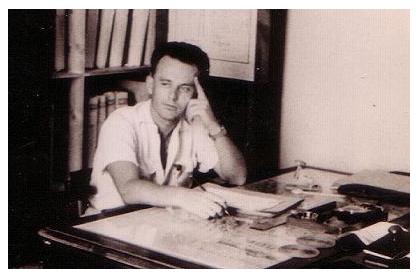
- that he was very thorough in
his work.
- that he learned everything regarding
the field/ object of the companies
he investigated.
- that he would not be bribed.
- that he would not be blackmailed.
- that human life and especially
that of unknowing/ peaceful/non-fighting
populations (as can be attested
by his action in war periods for
which he has been decorated) came
at first priority.
- that he was investigating and
therefore was studying the object
of a specific multi-national pharmaceutical
and its import-exports as well as
toxicity ingredients (because they
were linked to expenses) of relevant
substances in use.
That which we can conclude is that
candidates for a motive high enough
to coordinate accomplices in several
positions and ranks of the state machine
(from coroners and attorneys to executives
of Public Servants and politicians)
can't but be in the very high social
strata. Also, they will have to be
high enough in the social scale that
the change of governments and regimes
not affect the factors ensuring the
continuation of the cover up (therefore
they are plutocrats above governments).
That sort of accessory before the
fact needs a motive or profit large
enough so that it will draw their
attention to a unit (not group) within
a social class that for them seems
non-consequential.
The only way for that to be achieved
is if that unit threatens either the
acquisition of the usual level of
income or the need to remain protected
from revelations that will turn not
units, but whole social classes (i.e.
all the public opinion) against them.
Therefore, based on the above analysis
we can safely say that George Geritsidis
was not killed as collateral damage
or direct damage of the events in
Polytechnion, but was hideously murdered
due to his personal activity as Citizen
and conscientious Public Servant.
4. THE NATURE OF THE ASSASSINATION
COVER UP
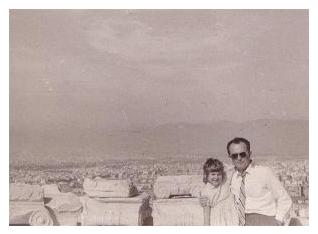 When
a killer covers up his/her crime,
he/she composes a different version
of the conditions of the victim's
death which based on the victim's
action and profile is such that those
who knew him, his friends and relatives
will not question it. When
a killer covers up his/her crime,
he/she composes a different version
of the conditions of the victim's
death which based on the victim's
action and profile is such that those
who knew him, his friends and relatives
will not question it.
That which circulated (no state agent
or other agent ever officially say
where, when and how he was killed
except after 25 years had passed and
the law allows the denial of investigation
of any new or unforeseen new version
or evidence, especially since the
doctors implicated have all regardless
of their age died) was that George
was killed due to his action to protect
activists against the Junta and/or
a mother with a child being in danger
from the gunfire. Also, that generally,
George was a victim of his conscientiousness
and thirst for Justice and Humanity.
The attendance of such a multitudinous
crowd of unknown people (famous and
not) who all attested to knowing him
as an Individuals as well as a politically
spirited active Citizen confirms that
the above version was designed because
George's political action was known
to many and good enough to warrant
his assassination on a day like the
Polytechnic's, especially after the
assassination of his collaborator
Gregory Lambrakis.
Therefore, the version of George's
death on the line of duty and protecting
the ones needing protection was believed
because it was true not only regarding
his general activity but also the
unsung, specific action he took as
Second Grade Department Head, which
took his life for the same ideals
on the same scope. The only difference
was that in this manner, the real
perpetrators remained and remain in
hiding.
In the name of Justice and Truth
to which you were so devoted.
Olga Georgiou Yeritsidou
GUESTBOOK
For your comments please click here.
|